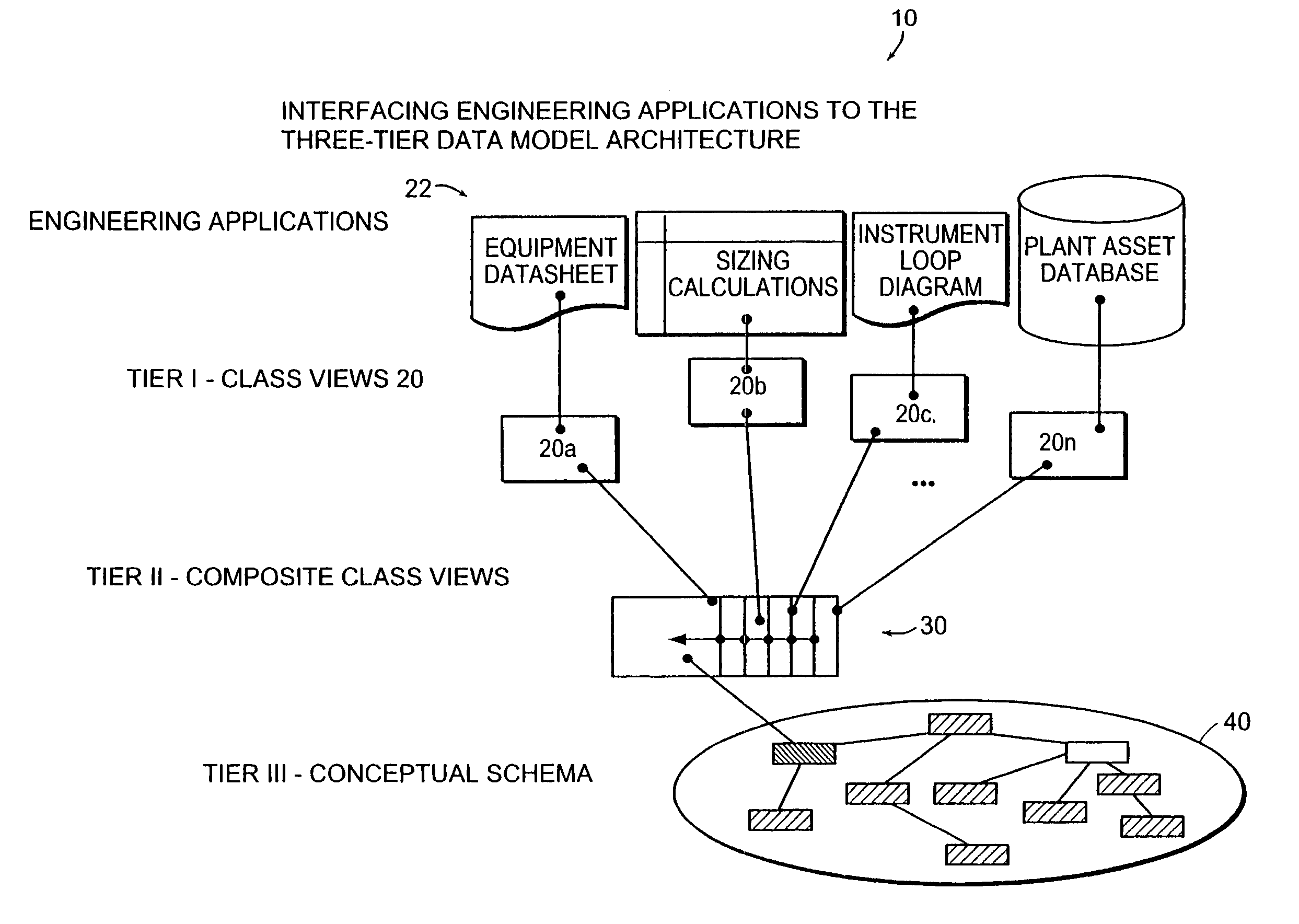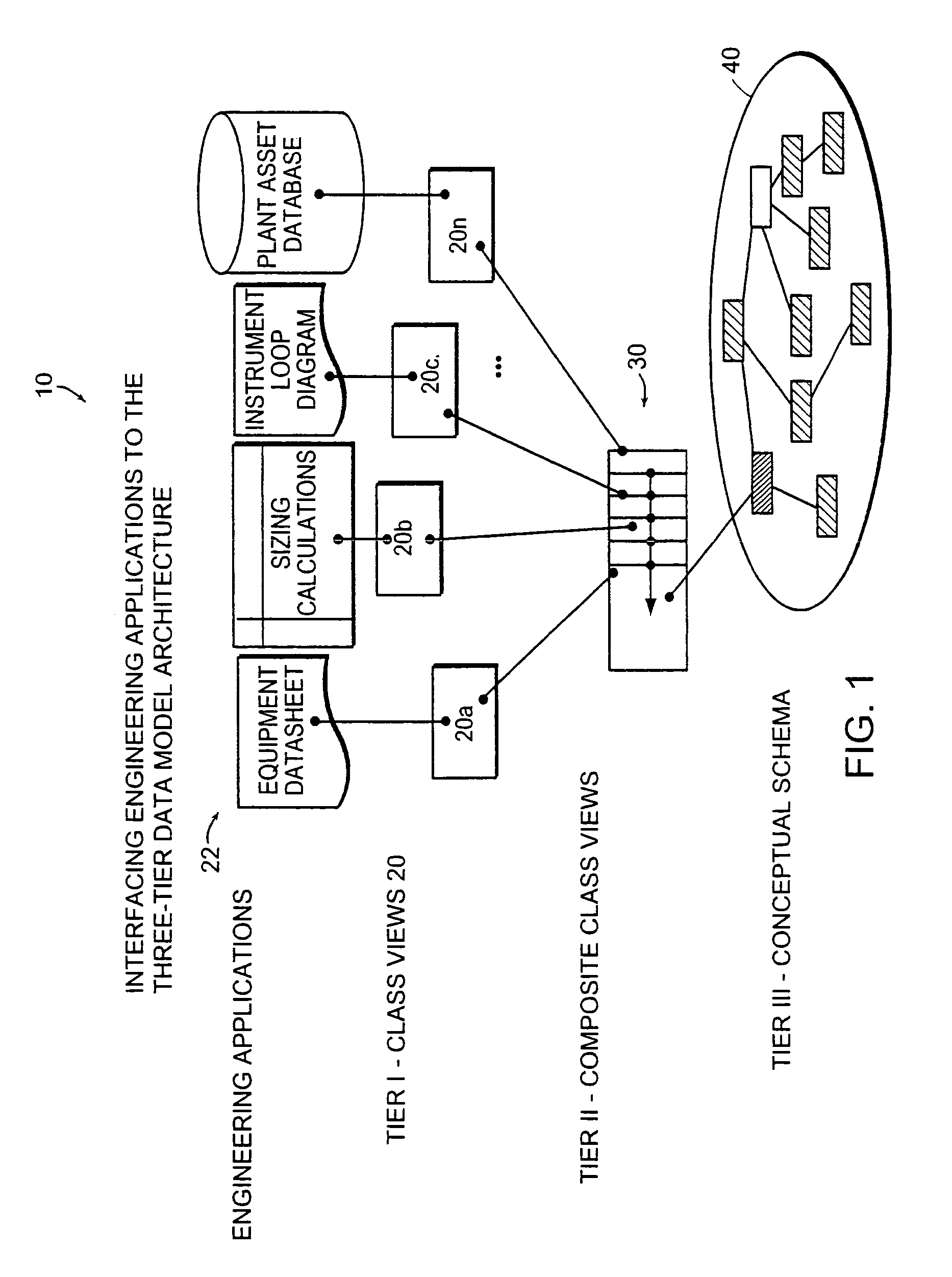System and method for organizing and sharing of process plant design and operations data
a technology for applied in the field of system and method for organizing and sharing of process plant design and operations data, can solve the problems of loss of opportunity to re-use engineering project knowledge, inefficiency in data exchange between disparate engineering tools, errors and rework,
- Summary
- Abstract
- Description
- Claims
- Application Information
AI Technical Summary
Problems solved by technology
Method used
Image
Examples
Embodiment Construction
[0048]A description of preferred embodiments of the invention follows.
[0049]As described herein, the present invention is intended to be used as a part of the software architecture in a computer software system for managing engineering data and integrating engineering tools used in the design and operation of plants in the process industries (chemical, petrochemical, refining, pharmaceutical, polymers, plastics and other process industries).
A. Three-Tiered Data Model Architecture
[0050]In one embodiment of the present invention, a data model architecture 10, as shown in the FIG. 1, is formed of three tiers:
[0051](i) Class views 20 (Tier I);
[0052](ii) Composite class views 30 (Tier II); and
[0053](iii) Conceptual model 40 (Tier III).
[0054]A Class View 20 is an application view of the data, expressed in the language and terminology of the application 22 or application users. A Class View 20 comprises a formal representation of an individual application 22 data model. The terminology, st...
PUM
 Login to View More
Login to View More Abstract
Description
Claims
Application Information
 Login to View More
Login to View More - R&D
- Intellectual Property
- Life Sciences
- Materials
- Tech Scout
- Unparalleled Data Quality
- Higher Quality Content
- 60% Fewer Hallucinations
Browse by: Latest US Patents, China's latest patents, Technical Efficacy Thesaurus, Application Domain, Technology Topic, Popular Technical Reports.
© 2025 PatSnap. All rights reserved.Legal|Privacy policy|Modern Slavery Act Transparency Statement|Sitemap|About US| Contact US: help@patsnap.com



